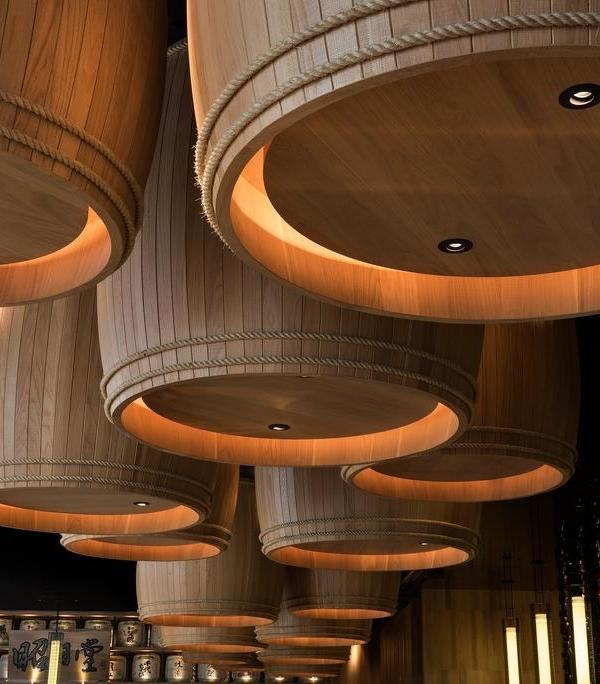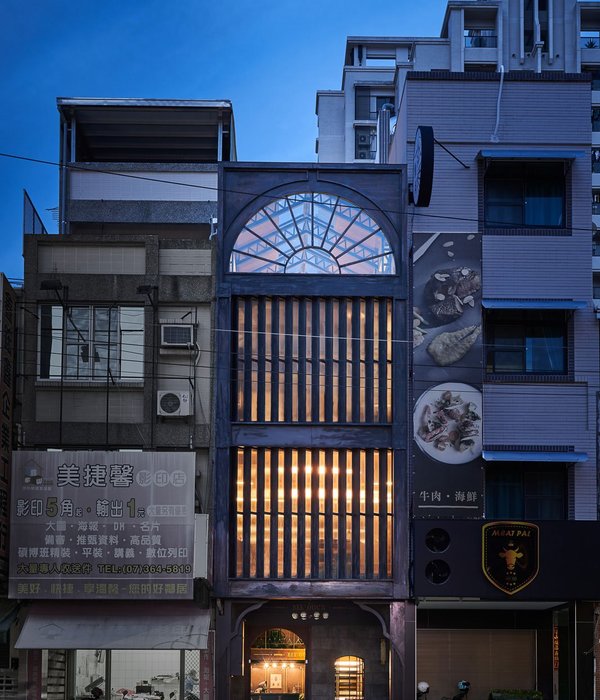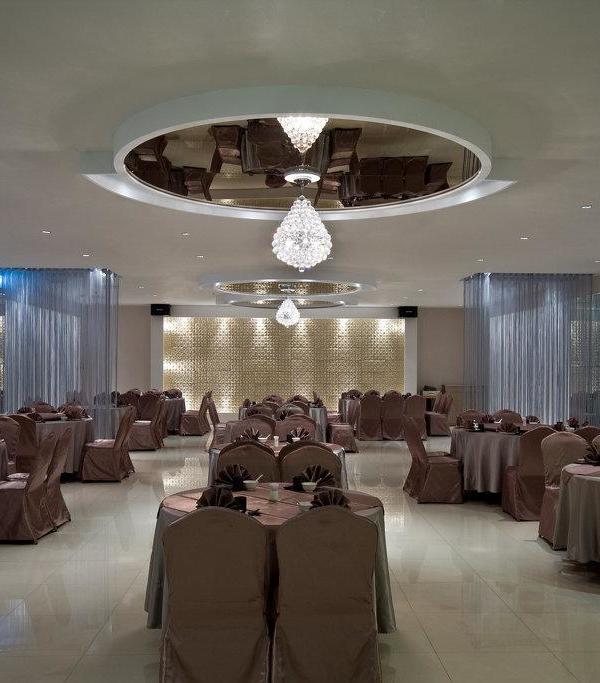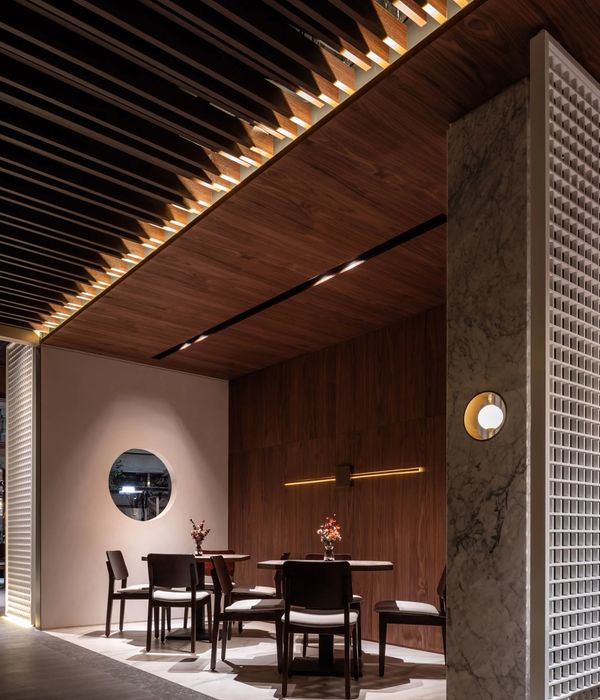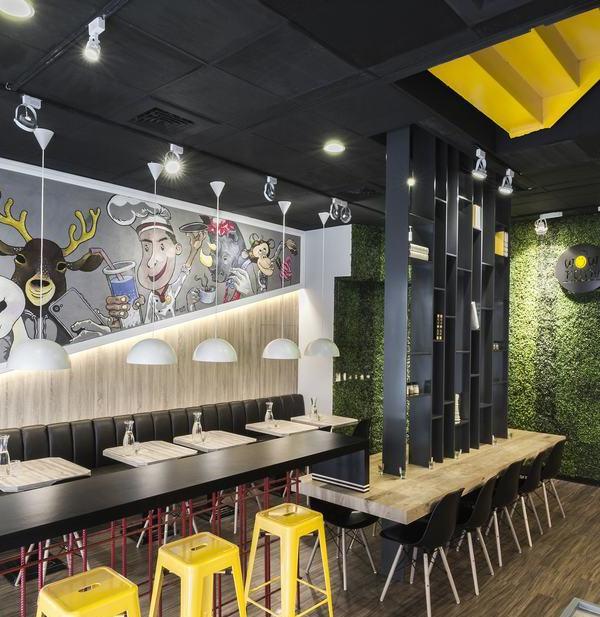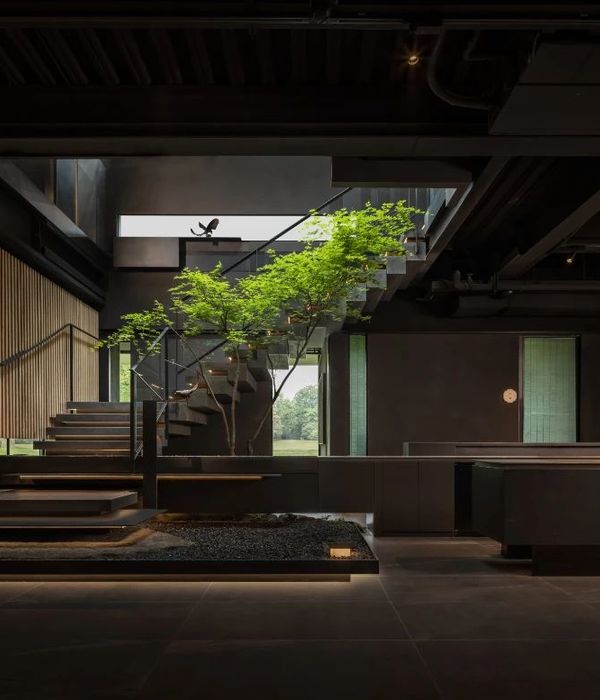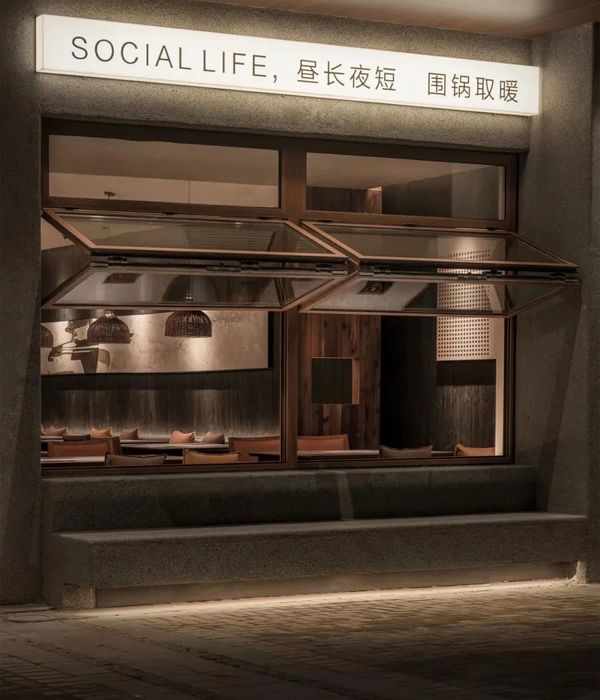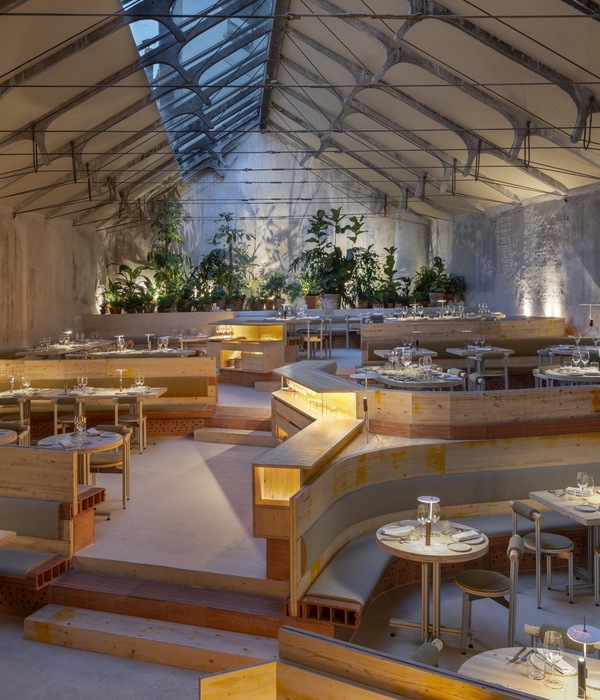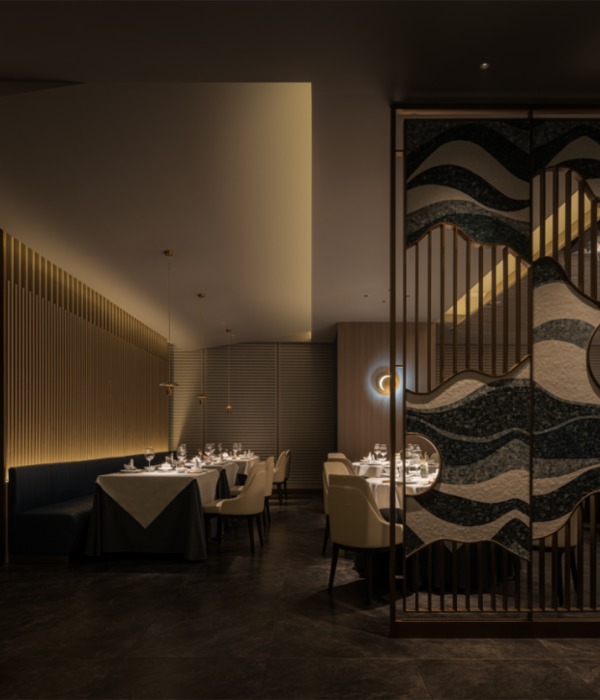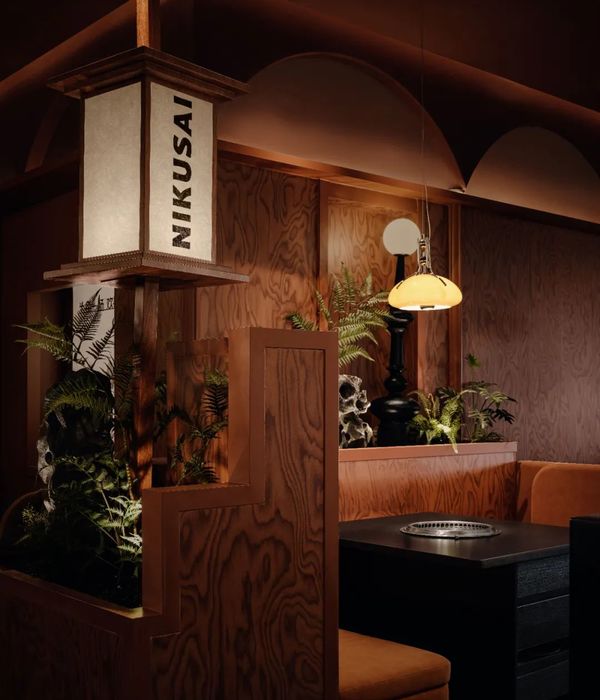本项目中,设计师将不同尺寸的钉子以不同的角度插入4个筒仓之间的空间中。实际上,在施工过程中,对于那些需要保存下来外墙立面和建筑体量,人们往往会在其上使用一些支撑构件,而在这个装置中,这些钉子就作为上述支撑构件的一种暗示,牢固住了不同的圆柱体,将这些原先分散的圆柱形筒仓变成了一个整体。
Iron staples of different sizes and orientations are inserted into the space between the 4 silos. As an allusion to the support elements used in construction for the preservation of facades and buildings, these small metal beams grab the different cylinders making them a sole element.
▼装置远景外观,distant exterior view of the installation
出于同样的意图,餐馆老板们在日常生活中也会将盘子、水壶、玻璃容器和大浅盘等器皿通过钉子牢固一起。这样看来,将不同器具拴在一起的保存方法其实是一种历史的再现,然而,尽管人们明白了以前人们这么做的意图,但是筒仓还是不可避免地失去了其原有的功能。
▼示意图,餐厅将盘子固定在一起的方式,the diagram that shows how plates are clamped
With this same intent, restaurateurs clamp daily utensils like plates, jugs, glasses, platters. In this case, the gesture of preservation is at the service of history, the past is grasped, while the silos lose their original function.
▼装置远景外观,将不同尺寸的钉子以不同的角度插入4个筒仓之间的空间中,distant exterior view of the installation, inserting iron staples of different sizes into the space between the 4 silos in different orientations
▼装置远景外观,铁钉模仿支撑元素,distant exterior view of the installation with the iron staples as the supporting elements
▼装置近景外观局部,铁钉将四个白色的筒仓固定成一个整体,partial close exterior view of the installation, the iron staples grab the different cylinders and make them a sole element
▼装置近景外观局部,铁钉和筒仓呈现出支撑结构和艺术作品本身之间的脆弱的平衡,partial close exterior view of the installation, iron staples and silos present the tenuous border of support elements and the artistic object
如果人们能够从自身的行动来看待这种将钉子钉入筒仓的行为,那么可以说,筒仓就成了一个如建筑物般的存在,而钉子则变成了支撑物。那么当人们站在这四个瓷瓶般的白色筒仓背后观察的时候,就可以想象:从外面看,这四个筒仓被整合成了一个整体,但是其各自的内部空间功能将被一直延续下去。
If we see this gesture in the light of our action, the Silos become the Object and the staples the support. We can imagine ourselves looking at the back of the four white porcelain vases stapled together while inside the action continues.
▼街角弧面镜中的Travessa装置,the image of the installation reflected in the mirror
这种干预的手法并不能从功能上来改善建筑的品质,但是它赋予了筒仓一种新的含义,强调了这个构筑物本身的形式。而这,正是这个项目所希望呈现出来的支撑结构和艺术作品本身之间的脆弱的平衡。
This intervention does not improve the building functionally, but it gives the Silos a new meaning, emphasizing the form, the construction itself. It is on this tenuous border of what is support and what is the artistic object that this project presents itself.
▼装置夜景,night view of the installation
▼设计草图,探讨铁钉插入的位置和角度,the sketch that explores the position and the orientation of the inserted iron staples
Team: FAHR 021.3 (Filipa Frois Almeida, Hugo Reis) with Dalila Gonçalves
Curator: Andreia Garcia
Photography: Filipa Frois Almeida
Client: Lionesa
Location: Maia, Portugal
Year: 2017
{{item.text_origin}}

